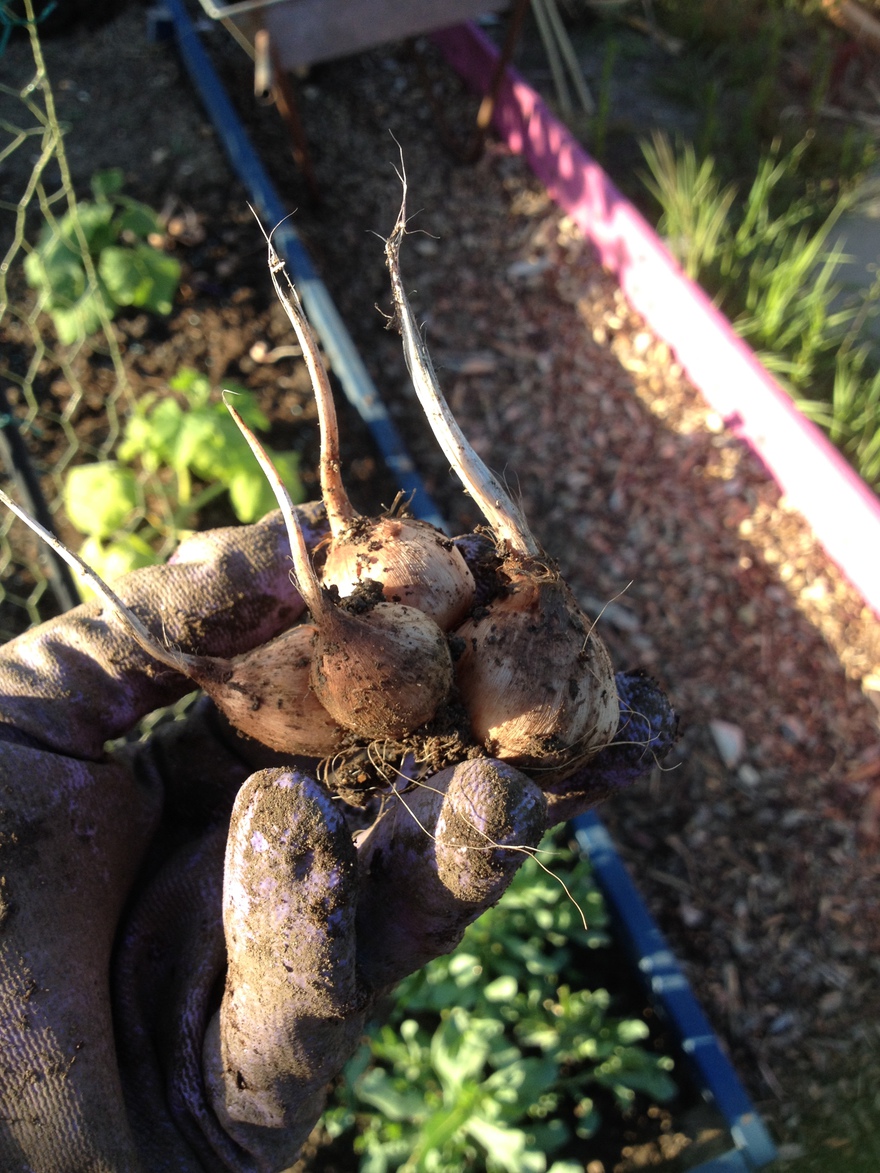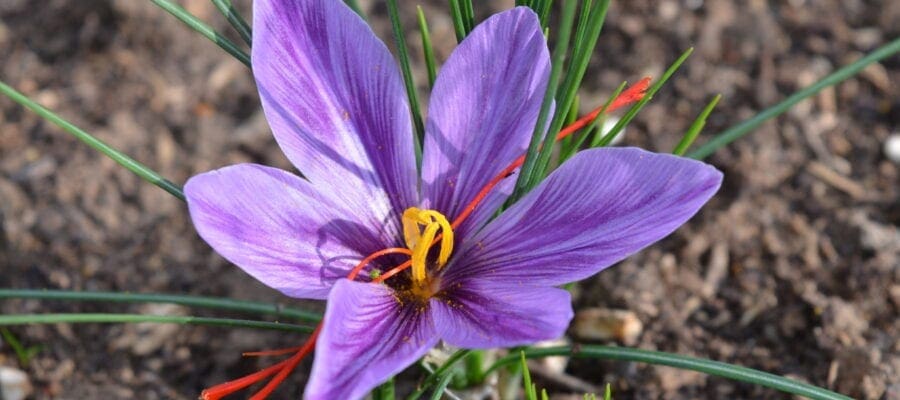Home-grown saffron is rich and honeyed, and mine is much stronger than shop-bought spice.
Saffron is wonderfully easy to grow. Home-grown saffron is rich and honeyed, and mine is much stronger than shop-bought spice. A narrow 80cm by 4 metre bed can yield over 1 gram (dried weight) – plenty for a few risottos, buns or ice creams, or some wonderful gin! Corms go on sale from July each year, making June a perfect month to plan where they will go.
Bear in mind saffron flowers in autumn, bulking up for the next season after flowering, so choose a position with full autumn and winter sun. They don’t like sitting in waterlogged soil either. My plots are fairly heavy London clay and I have raised my beds by 15cm, which is enough to keep them from rotting. I also feed the soil with plenty of well-rotted horse manure and mulch thickly with either more manure or spent hops to keep weeds at bay.

Corms are dormant by June. The foliage has died back and there is nothing to see above ground. I use this as an opportunity to lift and divide them. I grow saffron in narrow beds, which, given that one corm develops into 4-6 new ones over a season, quickly become congested. At which point they dwindle in size and flowers become fewer. Nice, fat corms about 8-9cm in circumference should flower in the same year – if you grow your own you’ll also find some corms get much, much bigger! When your corms arrive, plant about 10-15cm apart and deep, and wait. Flowers appear over about 3 weeks between September and November, and you need to be prepared to pick each morning come rain or shine!
I have more information about growing saffron on my blog www.mudandgluts.com and would love to hear your experiences too.





